How to Make Ackee Leaf Tea? 5 Easy Steps!
Ackee leaf tea, a traditional beverage with roots in West African and Caribbean culinary practices, has gained recognition for its potential health benefits.
The preparation of this herbal infusion involves a meticulous process to ensure the extraction of its delicate flavors and therapeutic properties.
To commence, one must select the freshest ackee leaves, typically identified by their vibrant green hue and supple texture. The chosen foliage is then properly cleaned and prepared, setting the foundation for optimal infusion.
Boiling water at the correct temperature is pivotal in preserving the integrity of the leaves’ beneficial compounds.
Once steeped to the desired strength, the resulting tea can be served according to personal preference, often enjoyed for both its taste and wellness advantages.
This guide aims to provide a clear and comprehensive understanding of the steps required to craft a soothing cup of ackee leaf tea.
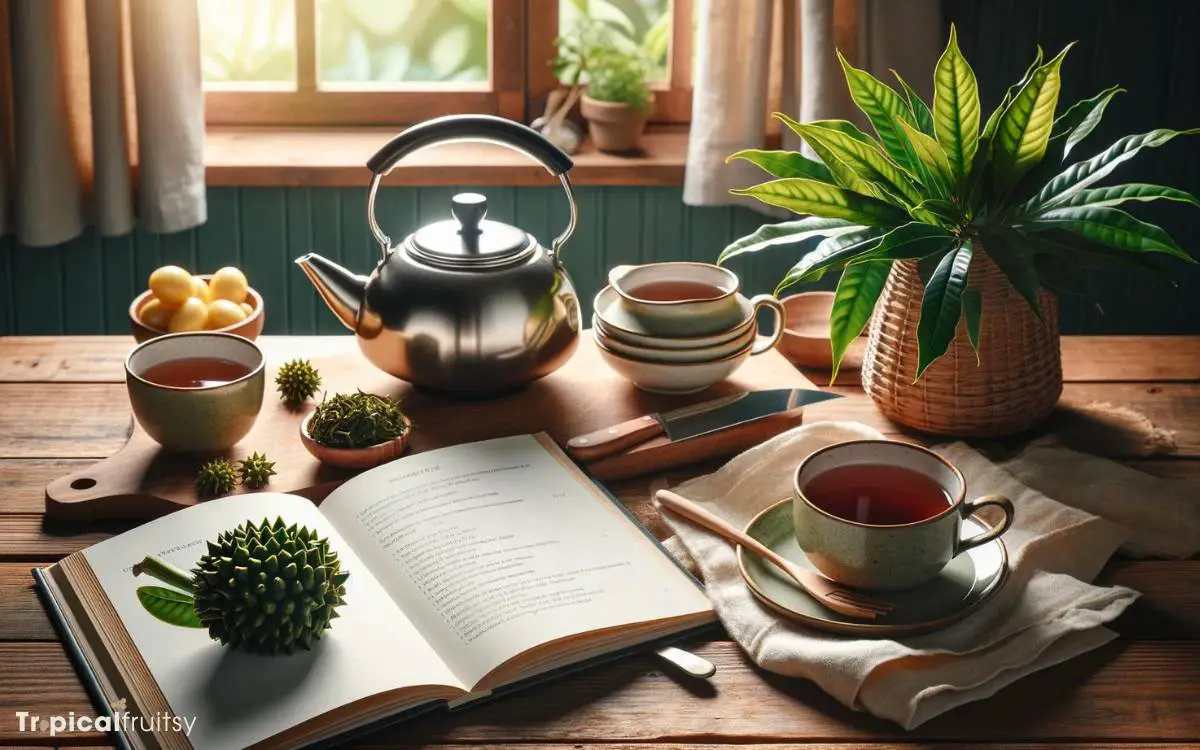
Key Takeaway
Step 1: Identifying Fresh Ackee Leaves
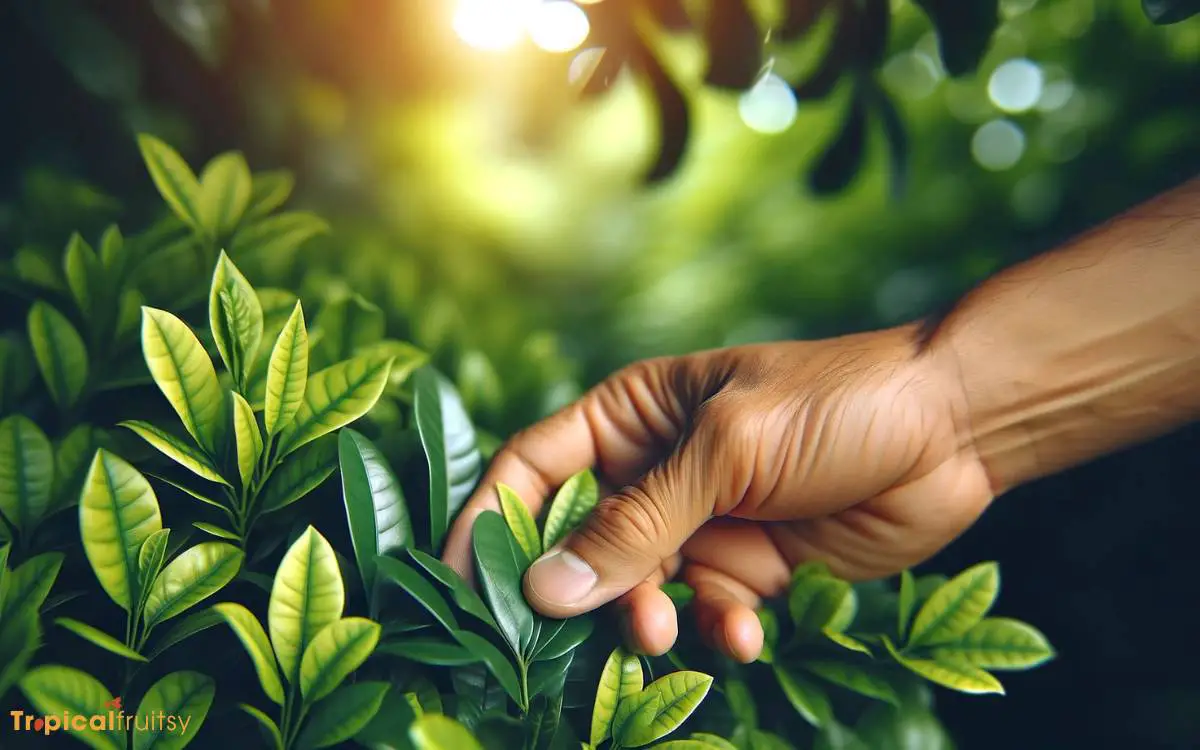
Selecting five to six vibrant green ackee leaves, free from blemishes or signs of disease, is essential for preparing a high-quality ackee leaf tea.
Optimal leaf selection is contingent upon assessing the foliage for uniform coloration and robust texture, indicative of maximal phytochemical content and minimal oxidative damage. The leaves should exhibit a healthy firmness, signaling vitality and freshness.
Additionally, ensure that the chosen leaves are of a mature state, as this is when the concentration of bioactive compounds such as flavonoids and saponins is at its peak. These compounds contribute to the therapeutic properties attributed to the tea.
With the appropriate foliage selected, the next step is the meticulous preparation of the leaves, setting the foundation for a potent infusion.
Step 2: Preparing the Leaves
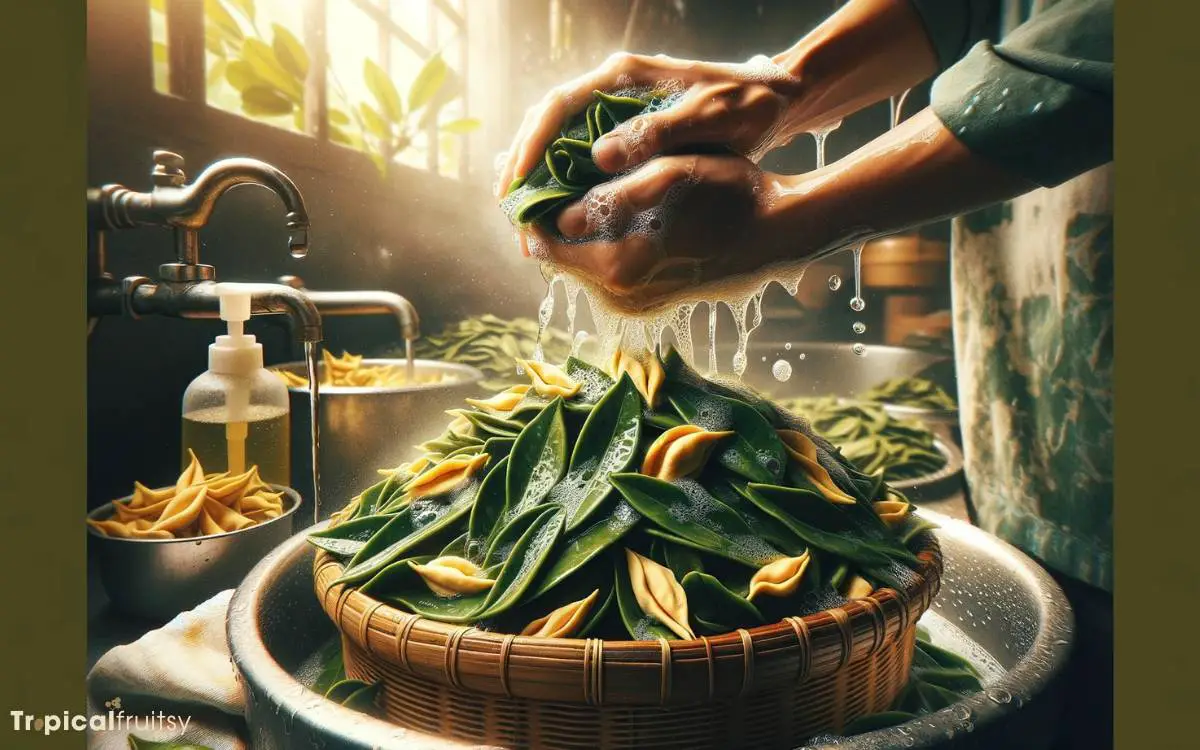
Once you’ve gathered your ackee tree’s freshest leaves, wash them thoroughly under running water to remove any dirt or impurities.
It is crucial to eliminate any potential contaminants that may adhere to the leaf surfaces, as these can compromise the quality and safety of your tea. After washing, pat the leaves dry with a clean cloth or paper towel to remove excess moisture.
This step is essential to prevent the growth of mold or mildew during the drying process. For the drying phase, arrange the leaves in a single layer on a flat surface, ensuring adequate air circulation.
A dehydrator can be used to expedite the process, set at a low temperature to preserve the leaves’ beneficial compounds.
Alternatively, air-drying in a well-ventilated, shaded area can be employed. This method may take longer but will prevent the degradation of heat-sensitive phytochemicals.
Step 3: Boiling the Water
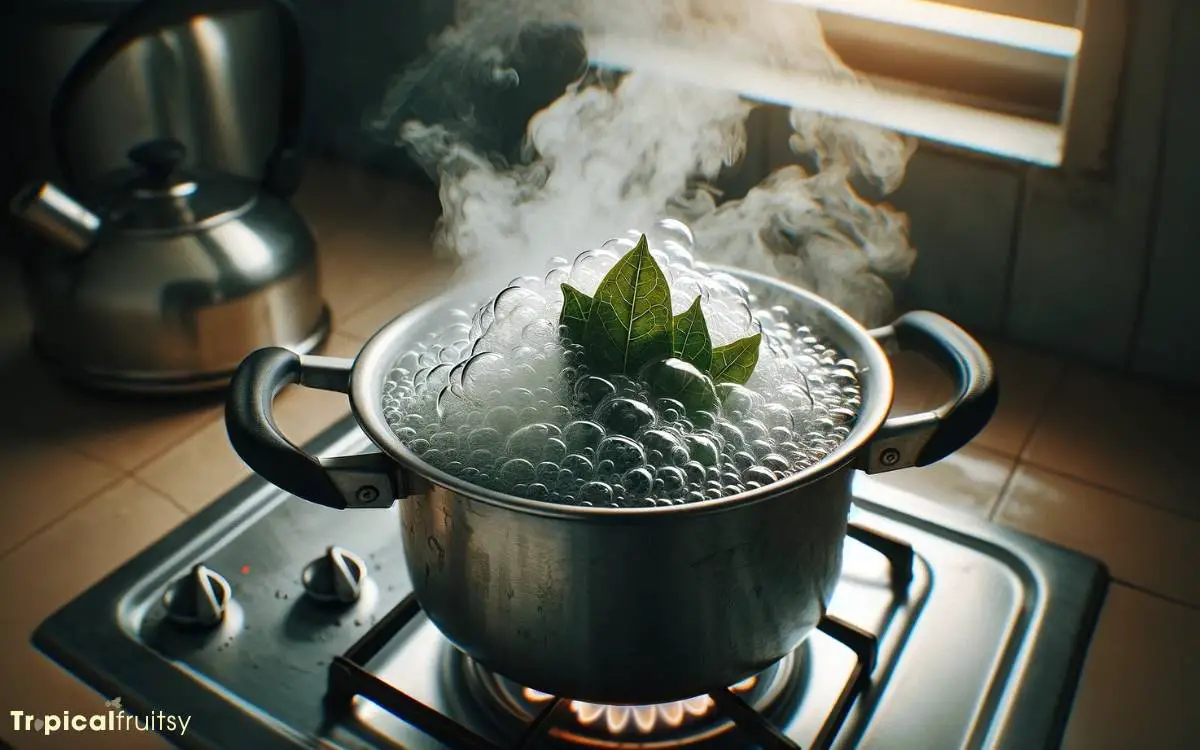
After preparing the ackee leaves, the tea maker’s next step is to bring fresh, clean water to a rolling boil in a kettle or pot. The quality of water is crucial as it can affect the tea’s taste and therapeutic properties.
Distilled or spring water is often recommended for its purity and neutral pH, which can enhance the natural flavor profile of the ackee leaves.
| Step | Description | Tip |
|---|---|---|
| 1 | Fill kettle with fresh water | Use cold water for a more oxygen-rich brew |
| 2 | Place on heat source | Use medium-high heat to reach boiling efficiently |
| 3 | Wait for rolling boil | Bubbles should be breaking the surface vigorously |
| 4 | Turn off heat | Avoid over-boiling, which can deplete oxygen levels |
| 5 | Prepare to steep | Have a teapot or cup ready for the next step |
Step 4: Steeping the Tea
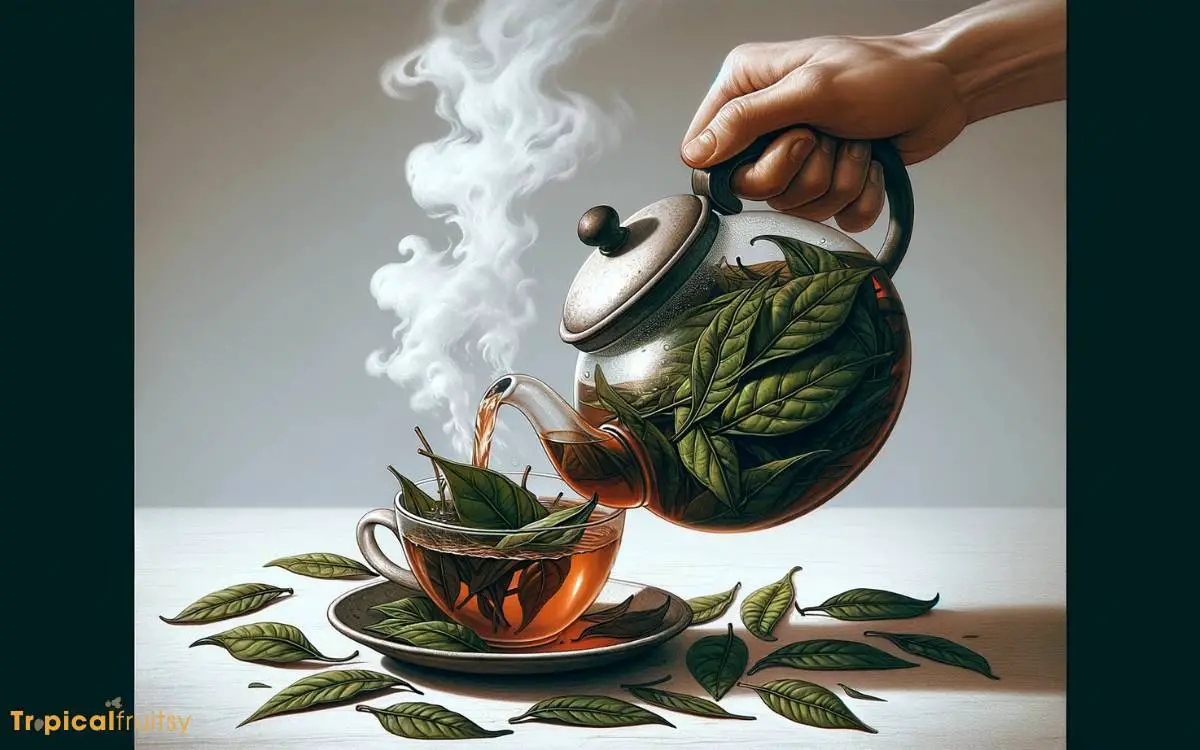
Upon reaching a rolling boil, the kettle’s contents are ready for the delicate process of steeping the ackee leaves. This step is critical in extracting the full spectrum of flavors, essential oils, and phytochemicals from the leaves.
It is a balance of time and temperature that ensures the beneficial compounds, such as flavonoids and saponins, are released without degrading.
- Temperature Control: Maintain the water just below boiling to preserve the integrity of the ackee leaves’ active compounds.
- Duration of Steeping: Typically, steep for 5 to 10 minutes. Longer steeping times may extract more tannins, leading to a bitter flavor.
- Leaf-to-Water Ratio: Use approximately one teaspoon of dried ackee leaves per cup of water for optimal concentration.
Precise steeping practices promote a healthful and enjoyable tea-drinking experience.
Can Ackee Leaf Tea and Ackee Seasoned Rice be Paired Together for a Meal?
Yes, ackee leaf tea and ackee seasoned rice recipe can be paired together for a meal. The unique flavors of ackee leaf tea complement the savory taste of the seasoned rice. The tea provides a refreshing balance to the rich and aromatic dish, creating a harmonious dining experience.
Step 5: Serving Suggestions
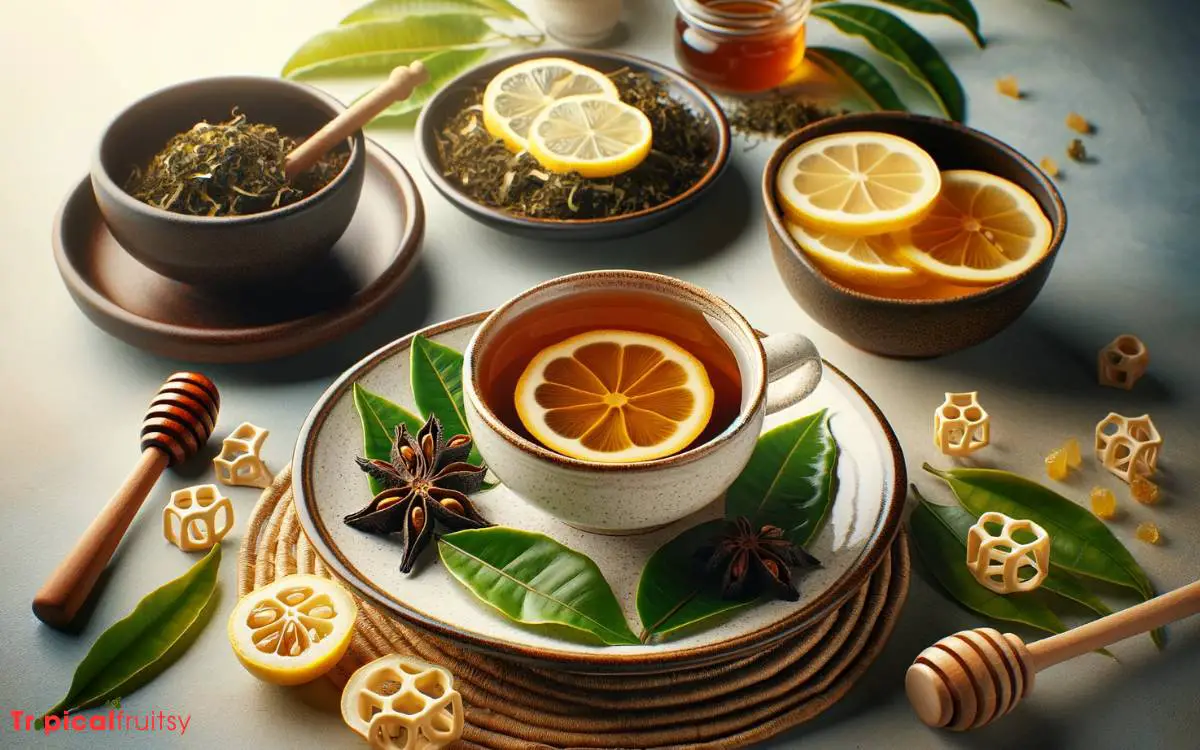
Upon completion of the steeping process, pour the ackee leaf tea through a fine strainer into teacups, adding sweeteners or lemon as desired for taste enhancement.
The phytochemical constituents of ackee leaves, such as flavonoids and saponins, may impart a nuanced flavor profile that can be complemented by various additives.
For those seeking a more traditional flavor, honey or agave syrup can serve as natural sweetening agents that align with the herbal notes of the tea.
Alternatively, the addition of a few drops of lemon juice not only brightens the tea’s flavor but also contributes vitamin C, enhancing the antioxidant properties of the beverage.
It is advisable to serve ackee leaf tea warm to fully appreciate its aromatic compounds, though it can also be enjoyed as a chilled infusion for a refreshing alternative.
Conclusion
In sum, the preparation of ackee leaf tea encompasses a meticulous process: selecting vibrant, unblemished foliage; cleansing and readying the leaves; boiling purified water to an exact temperature; and infusing the leaves to extract the quintessential flavors and compounds.
The resultant beverage, when served, offers not only a unique taste experience but also potential health benefits, meriting its inclusion in the repertoire of herbal teas.
The crafting of ackee leaf tea epitomizes the fusion of tradition and botanical knowledge.






